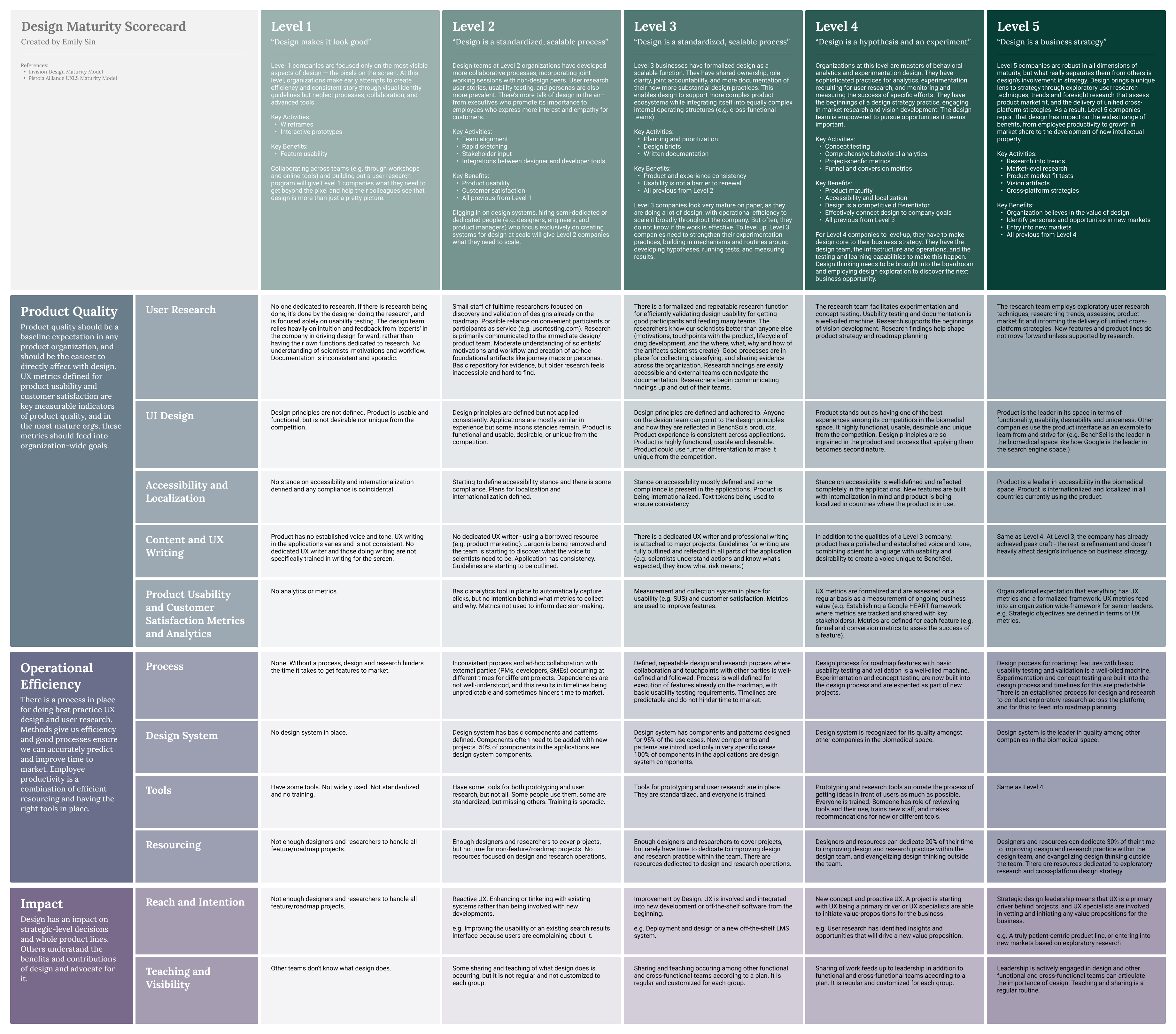Creating a Design Maturity Scorecard
Having been at BenchSci for a year and a half and witnessing our design team grow from two designers to 10 designers and researchers, thoughts on design’s impact on the overall organization started materializing more and more often in my daily work thoughts.
The Inspiration
After rifling through google search results for variations on “impact of UX design on the organization”, “levelling up a design team”, and “importance of product design”, I stumbled across this study conducted by Invision, which looked at understanding what differentiates high-performing design organizations. Invision found that the what really separates them from the others is design’s involvement in business strategy.
Why a Scorecard?
While Invision outlined five levels of design maturity and the key activities and benefits these organizations see at each level, there was a gap missing in terms of the “how”. How does a team assess what level it’s at, how do we assess improvements? So, I set out to create a scorecard for each of these levels in a number of design dimensions:
- Product Quality
- User Research
- UI Design
- Accessibility and Localization
- Content and UX Writing
- Product Usability and Customer Satisfaction Metrics and Analytics
- Operational Efficiency
- Process
- Design System
- Tools
- Resourcing
- Impact
- Reach and Intention
- Teaching and Visibility

Making Progress
With the scorecard created, it was just a matter of getting the team’s input on where BenchSci ranked in each dimension. The harder part was (and still is) figuring out whether we’ve made enough progress to jump to the next level. We set objectives and goals for the design team and used the scorecard to identify what areas we should focus on, and used the criteria to help shape the goals. We’ll continue to revisit this scorecard every few months to assess our progress. Ultimately, we want to keep moving towards design having a greater impact on the overall organization, and get more involved in strategic conversations.
